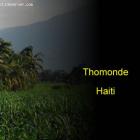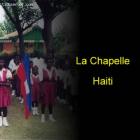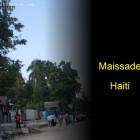ADVERTISEMENT
City
Miragoane a Proud Community
Miragoane rests on the northern coast of the western peninsula of Haiti. As part of the Nippes Department and its capital, it is a main port of second-hand imports from Miami. At the port, merchants purchase imports and vend them at Miragoâne street stalls.
The history of Miragoane port, among the largest natural ports of the globe, was as a gathering place for the Spanish when the island was called Hispaniola. Eventually the French chased them out.
Miragoâne, ringed by mountains, is protected by Ile Gonave, which lies above it on an inlet of the Caribbean Sea. During its early history, gold was discovered and mined there.
Fonds-des-Negres and its Infrastructure
In the southern section of Haiti lies the cityship of Fonds-des-Nègres, which straddles both Miragoâne and Nippe Departments. The city, founded in 2003, was born of the capital city of Miragoâne. Three other communes make up Miragoâne: Bouzi, Pemerle, and Cocoyers-Duchene.
Roads in Fonds-des-Nègres are in very bad shape, many of them dirt roads. At this time, however, road-work projects are proceeding, the roads now being built and repaired to bring them up-to-date with current safety codes. In areas where heavy rains block passage of traffic because of spontaneous lakes created by the deluges, bridges are going up as well.
The Town of Savanette in Centre Department of Haiti
Savanette, a cityship within Lascahobas Arrondissement, is located in the Centre Department of Haiti. As a third-level administrative division, it contains two sub-divisions, Savanette and The Hague.
Possessing the typical tropic climate, green hills adorn Savanette with a refreshing and pure river that plummets down into a glen. At the base of the hills, a swimming site, known as Basin Longe, beckons natives with cooling waters on hot days. Before the building of a well in Savanette, residents were forced to trek hours to find water. Since Water 4 a Billion, a non-government organization, finished the well, the population has been saved the trouble of hiking many miles for access to clean water.
Saut-d'Eau Waterfall, Ville Bonheur
Annually, during the summer months of Haiti, Voodoo believers make the trek from all over the country to the Saut-d'Eau waterfall in Ville Bonheur. There they feast and dance in a primitive expression of ecstasy, preparing themselves for a kind of baptism under Sant d'Eau waterfall's gushing stream.
This perennial event began in 1847 when witnesses described an apparition of the Virgin Mary appearing on a palm tree. Since then other Voodoo spirits of Iwa (one of the chief gods of Voodoo) have also manifested at the Saut-d'Eau waterfall.
The Voodoo religion was brought to Haiti by Congolese slaves, becoming embedded in Haiti's culture, early in its history. But the primary religion of faith in Haiti has always been the Catholic Church. The Voodoo religion has managed to survive, in part, because of its openness to outside influences. For this reason, Catholicism has helped to shape its religious rites. And the baptism at the Saut-d'Eau waterfall is an example of this influence.
Mirebalais, Haiti's Ultimate City, Example of Country's Potential
Mirebalais, capital city of Mirebalais Arrondissement, is part of the Central Plateau on the island of Haiti. Saut d'Eau, Boucan-Carrè, and Mirebalais comprise the Arrondisement. Mirebalais is easily accessible by recently-constructed National Highway 3, only 25 miles and less than an hour's drive from Haiti's capital, Port-au-Prince.
Mirebalais is a model city, an example of what can be achieved elsewhere in struggling Haiti. It is an environment of uninterrupted streams of projects that has made possible more potential jobs available than ever before. In a deviation from many of Haiti's cities, it is on the power grid 24-hours a day, by its favorable location to it.
Town of Roseaux In Grand'Anse Department
In the Grand'Anse Department of Haiti is located a small village that is a municipality called Roseaux in the Corail Arrondissement. Around 34,617 people inhabit Roseaux. It is located at 76 meters altitude above the sea level between Jeremie and Corail covering 216.81 km2. Per km around 150 residents live in Roseaux.
Scenic Beauty And Ceremonies
Gommiers, Carrefour Charles, Pig Bottom and Grand Vincent are its four communal sections. This cove is enclosed with big rocks and beautiful bays along its shoreline lined with wooden boats.
Little kids love to play in the crystal clear shallow waters. Heavenly mountains, lush green vegetation and tall palm trees can be seen in the vicinity. Voodoo ceremonies were conducted in the huge dark caves on the mountains inhabited by bats.
Lascahobas Economy
Lascahobas sits amid the Central Plateau of the island of Haiti. It is a second-level administrative division and the capital of Lascahobas Arrondissement. With a population numbering 41,716 residents, it is a one-hour drive from the Haiti-Dominican republic border. Three sub-divisions comprise Lascahobas, Little Background, Hoye, and Juampus.
In Lascahobas, agriculture drives the economy. Local farmland produces coffee, sisal, tobacco, and sugar crops. Sold at the always-crowded town market, the sale of these products supports commerce as a vital component of the community. A principle reason agrarian activity flourishes in Lascahobas is the well-irrigated farmland that draws water from the Lascahobas River.
The Town of Belladere in Centre Department
Belladère, part of Lascahobas Arrondissement, is a cityship located within Centre Department on the island of Haiti. A population of 78,770 residents, comprised mainly of young boys, form the largest segment of the population. The town contains three sub-divisions, Mathe-Renthe, Riaribes, and Roy-Sec.
Former Haiti President Dumarsais Estime established Belladère in 1948, its name meaning to guard. Considered the crème de la crème of the Central Plateau, its bewitching beauty and proximity to the Dominican-Republic make it an advantageous place for its export market. Elias Piñas, also known as Comendador, is the border-crossing city of the Dominican-Republic, over which Haitian day-laborers travel to seek jobs. Transportation means used to cross over include jitney buses, donkey trains, and agriculture export trucks.
Thomazeau, Keep Hope Alive
Thomazeau, a small village in the Croix-des-Bouquets Arrondissement, is under the Ouest Department. The population, numbering 52,017, experiences grinding poverty. Many of the homesteads house up to 13 occupants, living in cramped spaces, with probably no electricity or running water.
However, one non-government organization (NGO), The New Life Community Project of Thomazeau (NLCPT), has been operating several programs to give the residents fresh hope. NLCPT is helping the villagers de-contaminate their drinking water, get healthcare services, and attend school. NLCPT has also opened an orphanage for abandoned children, attended to the community's spiritual needs, and offered funding for other programs.
Road infrastructure is abysmal in Thomazeau. Like other small villages in Haiti, the roads remain unpaved and dangerous, owing to enormous potholes. When heavy downpours happen during the rainy season, the roads cannot be navigated at all.
The Town of Mirebalais, Haiti
There is no stopping Haiti's town of Mirebalais from developing into a significant municipality in the Mirebalais Arrondissement. The town is currently seeing various developmental projects that can surely improve the lives of the 165,000 people living there. The Arrondisement capital, which is only 30 miles and a 45-minute drive from Port-au-Prince, has become a place for people seeking a less populated town with many employment opportunities. With the developmental projects launched in the town, people are able to get jobs.
One of things that Mirebalais is proud of is the establishment of a modern teaching hospital, which is expected to be completed next year. It can be recalled that in 2010, non-government organizations Partners in Health and Zanmi Lasante rolled out a plan to build a state-of-the-art community hospital in the town. The construction, however, was hampered by the 2010 earthquake. Construction resumed and will likely finish in 2013. The Mirebalais National Teaching Hospital, the first of its kind, will be able accommodate about 320 in-patients. It will also feature training facilities for medical students, nurses and physicians. This is a good thing as Haiti is in need of more medical professionals in order to enhance health services.
Our objective is to share with you news and information about Haiti and the people of Haiti. Traditions, habits and the way we were or grew are alive in this site. We highly recommend that you Subscribe to our Newsletter and also share with us some of the things that are memorable and made us unique people.

 Thomonde, Haiti
Thomonde, Haiti  Black Friday Shopping Season
Black Friday Shopping Season  La Chapelle, Haiti
La Chapelle, Haiti  Maissade, Haiti
Maissade, Haiti  Haitians are a Proud People
Haitians are a Proud People